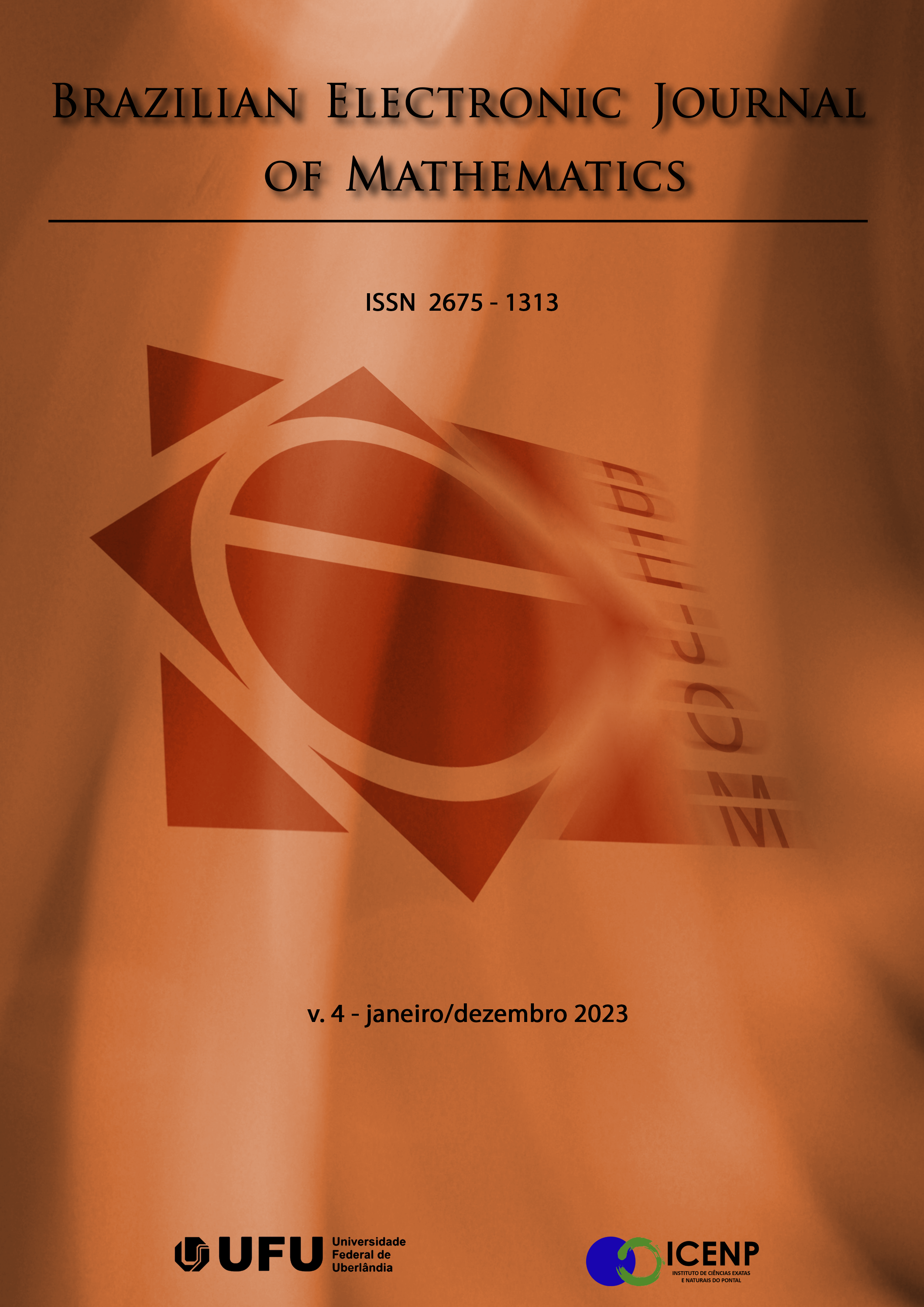On a point kinetic with explicit presence of neutron poisons: reactivity decomposition according to long time scales
DOI:
https://doi.org/10.14393/BEJOM-v4-2023-68618Keywords:
Neutron Diffusion, Neutron Poisons, Adomian Decomposition Method, Short and Long Time Kinetics, Reused Nuclear FuelAbstract
The present work consists of deducing the point kinetics model considering neutron absorber poisons from the neutron diffusion equation. When considering poisons products, the non-linear system has different orders of magnitude in short and long time scales. The first one represents operational reactor control, whereas the second is due to the change of the chemical composition of the nuclear fuel as a result of burn-up. This represents a first step in a new direction, as it shows how we arrived at the extension of the point kinetics model considering Xenon-135 and Samarium-149 poisons. The non-linear system is solved using the Adomian decomposition method that expands the non-linear terms into an infinite series, obtaining a recursive system, where the recursion initialization is a homogeneous linear equation and the subsequent recursion steps consider the non-linear contributions as source terms constructed from previous recursion steps. The formulation of the source terms of the decomposition method is shown. In order to demonstrate the robustness of the current approach to this type of problem, case studies are presented where nuclear fuel uses reused elements up to third generation, taking a step in a new direction where poisons are already present in the reactor initially.
Downloads
References
ADOMIAN, G. A review of the decomposition method in applied mathematics. Journal of Mathematical Analysis and Aplicationsv. 135, p. 501–544, 1988.
ADOMIAN, G. Solving frontier problems of physics: the decomposition method, USA, Kluwer academic Publishers, 1994.
BIAZAR, J.; SHAFIOF, S. M. A simple algorithm for calculating adomian polynomials. Int. J. Contemp. Math. Sciences, v. 20, p. 975–982, 2007.
BOYCE, W. E.; DIPRIMA, R. C.Elementary Differential Equations and Boundary Value Problems. USA, John Wiley & Sons Inc., 2001.
BUZANO, M. L.; CORNO, S. E. C. I. A new procedure for integrating the pointkinetic equations for fission reactors. Applied Mathematics and Computation, v.29, p. 5–19, 1995.
CACUCCI, D. G. Handbook of nuclear engineering, Germany, Springer, 2010.
DOE, F. H.Nuclear Physics and Reactor Theory, USA, U.S. Department of Energy Washington, 2013.
ESPINOSA, C.E.; BODMANN, B.E.J.; VILHENA, M.T. On the Neutron Point Kinetic Equation with Reactivity Decomposition Based on Two Time Scales. In: Constanda, C., Dalla Riva, M., Lamberti, P., Musolino, P. Integral Methods in Scienceand Engineering, v. 2, Birkhäuser, 2017. Cham. https://doi.org/10.1007/978-3-319-59387-6_7
ESPINOSA, C. E. Modelagem e Simulação dos venenos no combustível nuclearem cenário com duas escalas de tempo. Tese de Doutorado – UFRGS, Porto Ale-gre, 2016.
PAGANIN, T.; BODMANN, B.; VILHENA, M. T. M. On a point kinetic model fornuclear reactors considering the variation in fuel composition. Progress in NuclearEnergy, v. 118, p. 103-134, 2020.
PETERSEN, C. Z.; DULLA, S.; VILHENA, M. T. M.; RAVETTO, P. An analytical solution of the point kinetics equations with time-variable reactivity by the decomposition method. Progress in Nuclear Energy, p. 1–4. 2011.
REUSS, P.Neutron Physics, France, EDP Sciences, 2008.
DA SILVA, M. W.; LEITE, S. B.; VILHENA, M. T.; BODMANN, B.On an analytical representation for the solution of the neutron point kinetics equation free of stiffness. Annals of Nuclear Energy, v. 71, p. 97–102, 2014.
DA SILVA, M. W.; VASQUES, R.; VILHENA, M. T.; BODMANN, B. On an analytical representation for the solution of the neutron point kinetics equation free of stiffness. Annals of Nuclear Energy, v. 97, p. 47–52. 2016.
GLASSTONE, S. Nuclear Reactor Theory, New York, Van Nostrand Reinhold Company, 1970.
LAMARSH, J.R. Introduction to Nuclear Reactor Theory, New York, Addison Wesley Publishing, 1966.
SCHAUN, N.B.; TUMELERO F.; PETERSEN, C. Z. Influence of the main neutron absorbers poisons coupled to the Point Kinetics model by the Rosenbrock’s method. Brazilian Journal of Radiation Sciences, p. 01-19. 2022.
ZIYA, A.; LELLOUCHE G.S.; SHOTKIN, L.M. Mathematical Methods in Nuclear Reactor Dynamics, USA, Academic Press, 1971.
Downloads
Published
Issue
Section
License
Copyright (c) 2023 BRAZILIAN ELECTRONIC JOURNAL OF MATHEMATICS

This work is licensed under a Creative Commons Attribution-NonCommercial 4.0 International License.
- Articles published from 2025 onwards are licensed under the CC BY 4.0 license. By submitting material for publication, authors automatically agree to the journal’s editorial guidelines and affirm that the text has been properly reviewed. Simultaneous submission of articles to other journals is prohibited, as is the translation of articles published in this journal into another language without proper authorization.
- Articles published prior to 2025 are licensed under the CC BY-NC 4.0 license.









